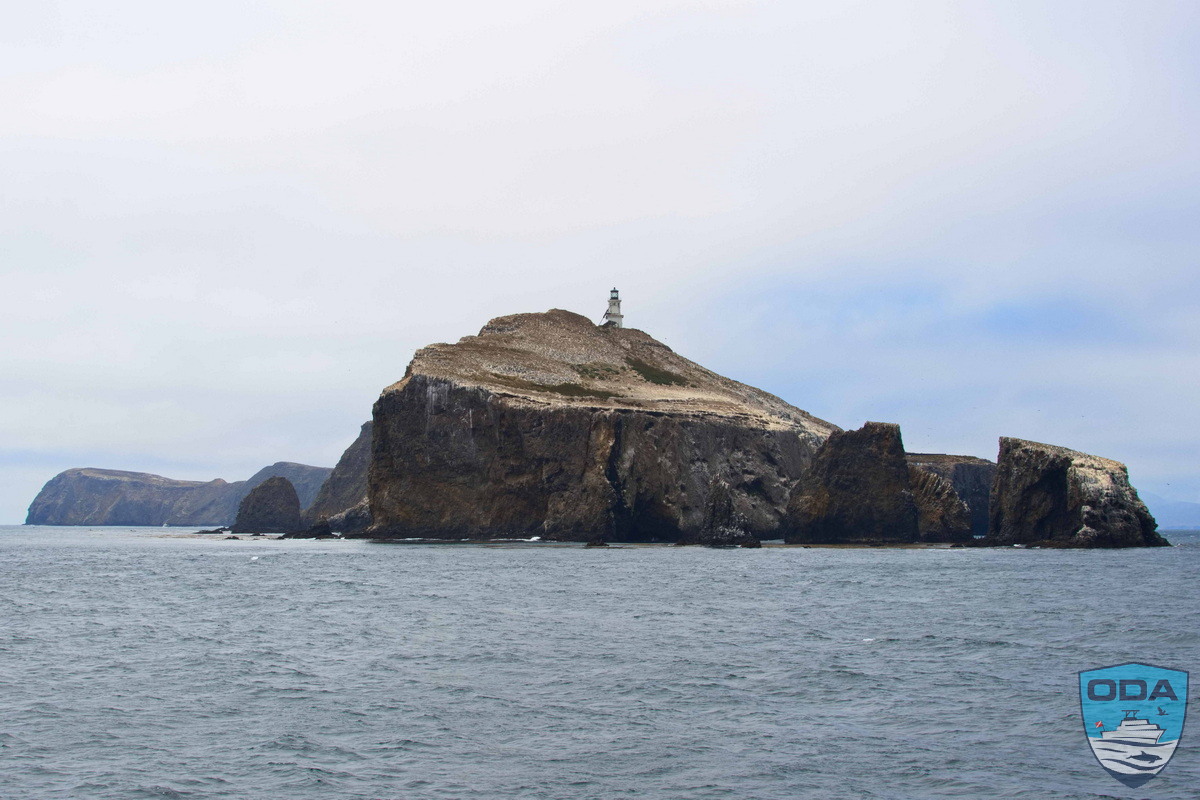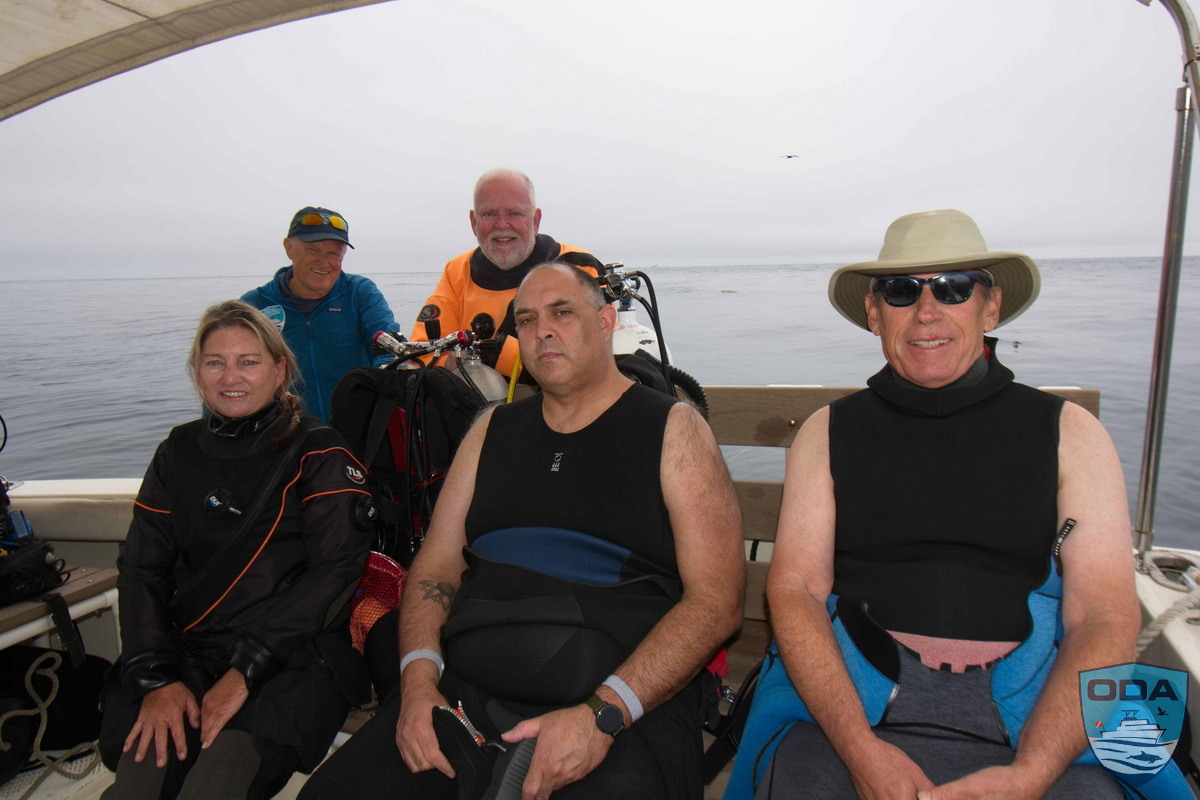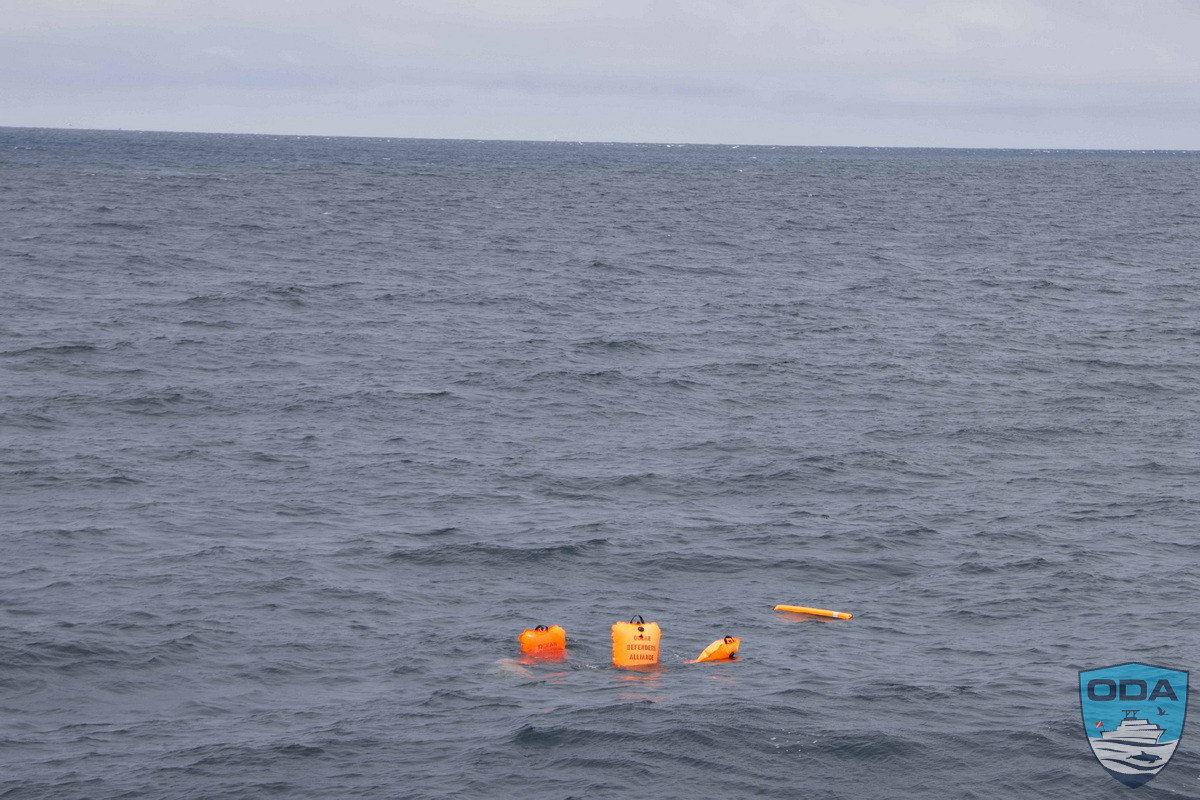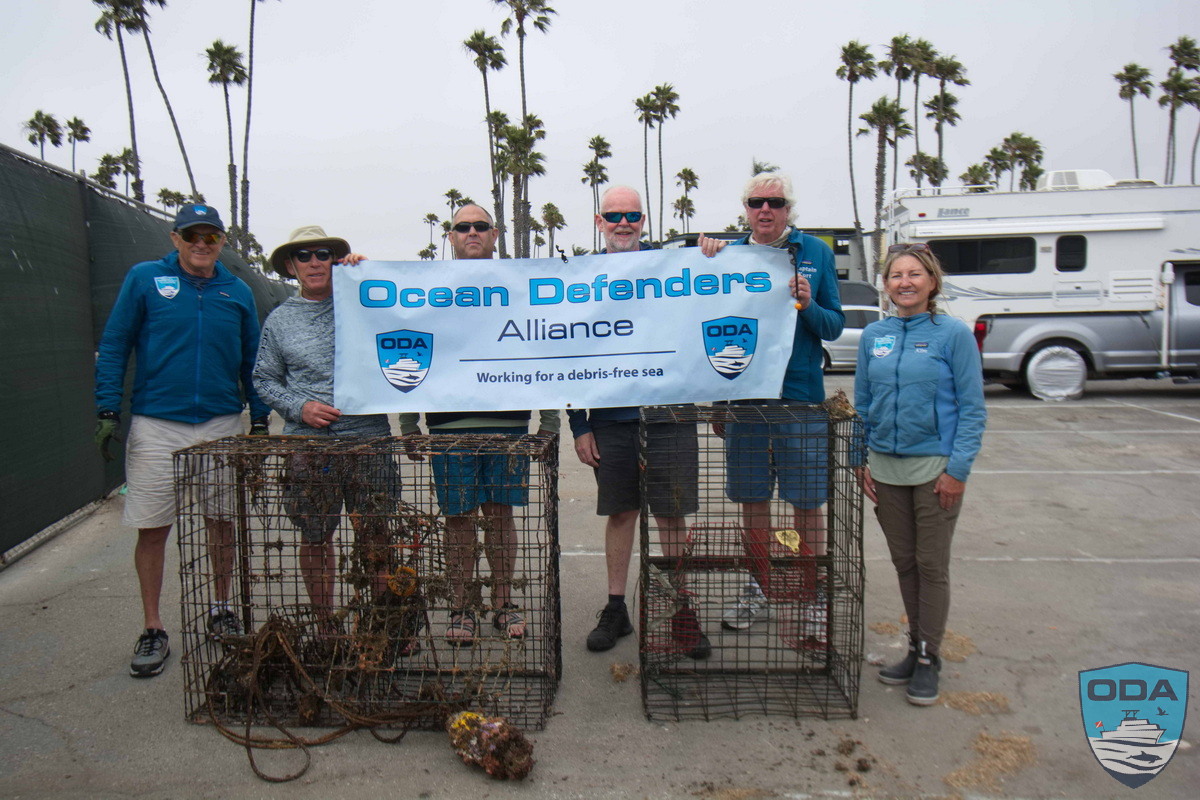By Founder and President Kurt Lieber
Note: We don't have a lot of photographs in this story, but we have two great videos. Be sure to check them out!
On Saturday, August 9th, half a dozen of us met up at the Channel Islands Harbor. Skies were really overcast and the water in the harbor was a dirty brown, more the color of mud than the ocean blue we were hoping for.
Ocean Defender volunteers Kim Cardenas, Dave Merrill, Bart Steger, Geoff Walsh, Mike Wynd, and I stood around contemplating whether we should go out or not. We were leaning towards canceling when Kim pulled out her phone and looked at a live underwater camera that is positioned near the landing dock on Anacapa Island. It’s not very far from where we intended to dive.
Our destination:
Looking at the video made it look like the UW visibility wasn’t too bad out there, so, we decided to give it a go!
The 11-mile ride to the Arch Rock area of the island was uneventful, and the small swells made the trip go fast, we were there in less than an hour.
As we approached our intended dive site, we could see the currents were really ripping. So, we went to plan B.
Someone had told us that a sailboat sank near the landing dock about a month ago. Even though they were able to refloat the boat, there was supposed to be a large amount of debris that had floated out of the boat and was now littering underwater.
This site is inside the Channel Islands National Marine Sanctuary and as such is a valued underwater (UW) habitat. We decided to see if we could clean that debris up.
Mike jumped in first and took his camera with him, which turned out to be quite fortuitous.
Kim, Bart, and Geoff splashed next and swam over to the site where they thought the boat had gone down. The site also happens to be a short swim away from an UW cave that is a refuge for lobsters.
Mike went into the cave and got some cool footage of those spiny lobsters in their hideout. As he came out, he saw others as he was hooking an abandoned anchor and chain up to some lift bags and sending it to the surface.
Once the lift bags hit the surface, the currents quickly swept it away towards a mass of kelp. Oh boy, just what we didn’t need! It’s hard enough to lift a heavy anchor out of the water without having to haul out a bunch of kelp as well.
Luckily Bart and Geoff had an instinct that that was going to happen, so they surfaced and commandeered the bags and swam them over to Dave and me on the boat.
Once we had the anchor and chain secured on the rear deck Bart and Geoff continued looking for debris. Somehow in all this chaos, Kim had become separated from those two but had kept looking for debris.
As the end of the planned 40-minute dive neared, I saw Kim about 100 yards behind us. As she used her Dive Propulsion Vehicle to scoot over to the boat, Bart and Geoff were already aboard. When Kim climbed aboard and sat down to get out of her gear, her eyes sparkled as she relayed what she had seen. Here is what she had to say:
Diving off the coast of Anacapa Island is always a remarkable experience. Mostly due to the fact that there is a Marine Protected Area (MPA) offshore of the island, which provides for an incredible abundance of marine wildlife. On this day, I found myself “swarmed” by giant sea bass (GSB). These massive, ancient fish – capable of growing up to 7 feet long and over 500 pounds – are typically found as solitary or in pairs. So, seeing a large grouping of them was very unusual.
After the dive, I could not stop talking about how amazing it was to have seen SO many GSB together on one dive. This prompted me to go home and research the unusual encounter. Turns out, they do exhibit large grouping behavior during the months of June through September for breeding. This is the only time of year they do this. Turns out apparently, I got caught in the middle of a large dating scene! I could reach out and touch them.
These wonderful creatures were gliding all around me and even coming close and looking me face to face, in the eye. I felt very humbled and lucky to have witnessed this encounter, knowing that some of them may be even older than I am. The wild and mysterious ocean will never cease to amaze me. I felt very grateful to have had this encounter.
Luckily Mike was down there witnessing the same event and came away with images that you will rarely see.
These ancient denizens of the oceans are called broadcast spawners. Males and females congregate at certain times of the year in locations they’ve learned from their ancestors. When the time is right the males and females jet towards the surface and release their sperm and eggs into the water column. Only a few embryos will result in a viable baby fish, but enough survive to help increase the population. These animals were hunted almost to oblivion, to the point where a law in 1981 was passed, making it illegal to hunt them in California.
But because these animals are very slow-growing it will take decades for the population to get back to anywhere close to the numbers that used to swim in our waters in the 30’s and 40’s. As an example, a 150-pound fish is 15 years old. Scientists don’t even know how old a 500-pound GSB is…
Once all the divers were safely back on the boat, and the “big fish” stories were being told, Kim said she had seen two abandoned lobster traps and marked the location so we could go retrieve them.
We nabbed the traps and then headed home. It's fulfilling to get the hazardous abandoned fishing gear out of harm’s way... and we'll have memories that will last a lifetime.
If you want to be part of protecting the GSB and other ocean wildlife, we'd love to have you partner with us!
Donate to Keep ODA Crew at Sea!












